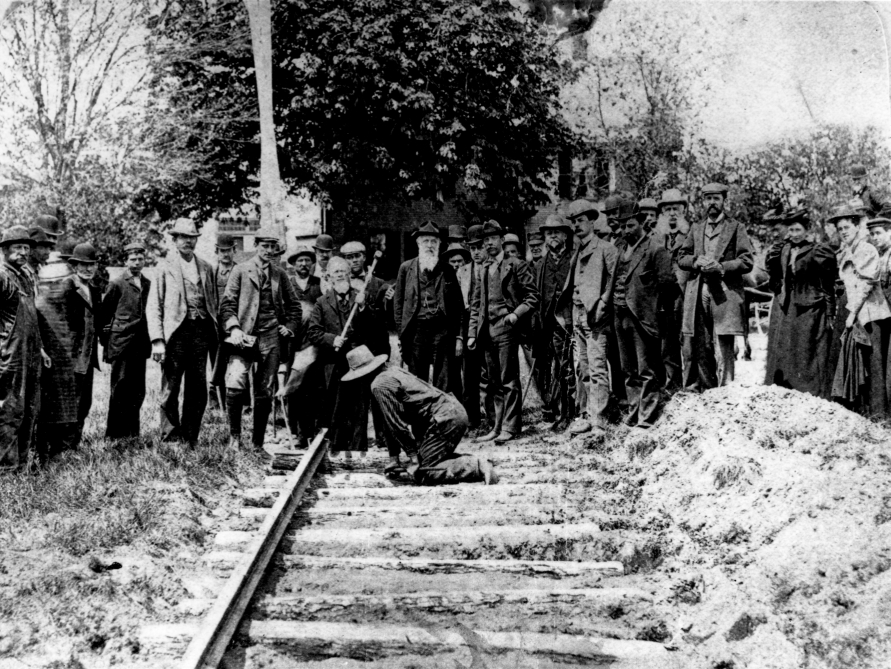
"Our Town" by James W. Tucker
Hampton Union
Thursday, September 27, 1951
PART 1One of the most colorful eras in the history of our town began with the advent locally of the electric railway. It provided the impetus which accounts for the earliest and probably the most rapid and the greatest period of physical growth and development at Hampton Beach. The two decades, and a little more, which extended from 1897 to 1920 were not included in the account of Hampton's growth as outlined in this column last week. They should have been, because this is probably the most outstanding epoch in our town's 313 year history, insofar as development is concerned.
First came the electric railway, then came the Casino, then the "Mile Long Wooden Bridge" and with these new facilities for mass transportation and for recreation came the people. The era of electric railways was followed by the age of the motor car and even more people became aware of our town's great recreational asset, Hampton Beach. Thus was a gangling gosling transformed into a golden goose and the transformation was a colorful process filled with fantastic promotions and solid, worthwhile physical growth. Over the intervening years our town has continued to profit by reason of the golden eggs in the shape of additional valuation and other important revenues, produced by the narrow strip of land which is Hampton's eastern boundary along the Atlantic Ocean and which originally was an ox pasture.
Railroads Built America
Earliest Rail Transportation
In 1879, a full size electric railway with one thousand feet of track and a car seating twenty persons was exhibited in Berlin, Germany. Power for this car was generated with an electric dynamo. In 1884, the first practical overhead-trolley line was built in Kansas City. In 1885, a third-rail line was built in Baltimore and an overhead trolley system completed in Toronto, Canada. On January 1, 1888, there were thirteen electric railways with 48 miles of track in operation in the United States and Canada. In the late 1920's, there were nearly 700 electric car companies in this country with over 40,000 miles of track. By this time, however, autos were on their way in and suburban and inter-urban trolleys were on their way out -- including of course, our Hampton electric railway system which at that time was owned and operated by our town. The entire life span of suburban and inter-urban trolleys was less than thirty years.
Promoted Trolley Empire
Trolley Line Built in 1897
Judge Lamprey's Speech

In connection with the public exercises which marked the start of construction on May 19, 1897, the first spike was driven in the first rail by venerable Judge Charles M. Lamprey who at that time presided over our town's municipal court. Following the driving of the first spike, Judge Lamprey made an interesting speech. The tenor of his remarks concerned the objections which so many people had to progress and how folks were inclined to hark back to the good old days. The judge told his listeners that a century ago, (1797) when the town hall, then the town [Congregational] church, was built, many people believed that a new building was unnecessary. And Judge Lamprey reported that there was similar criticism when the Hotel Whittier was started 82 years ago (1885) and he stated to the audience, which enjoyed his remarks back there in 1897, that similar sentiment existed 54 years ago (1843) when the Congregational church was raised and 25 years ago that month (1872) when people of Hampton assembled to raise two fine schools, the East and the Center. He expected that many people would object to progress as indicated by the construction of an electric railway, even though in his opinion it was of even greater import than the other events he had mentioned. The electric railway company gave away pictures of Judge Lamprey driving the first spike to every passenger who paid a fare when the road opened in mid-summer of 1897.
Next week, we will endeavor to trace the growth of Lovell's trolley-line syndicate which served Hampton Beach and recount the steps which led to the purchase of the electric railway by the town of Hampton. Yes, our town operated one of only three municipally owned electric railway utilities in the United States!
